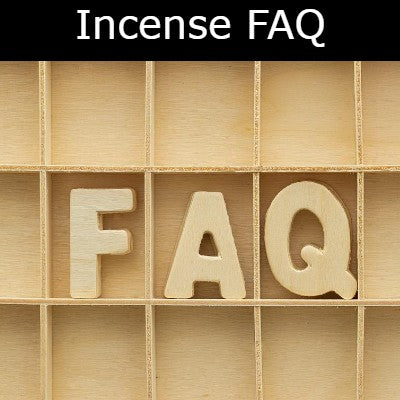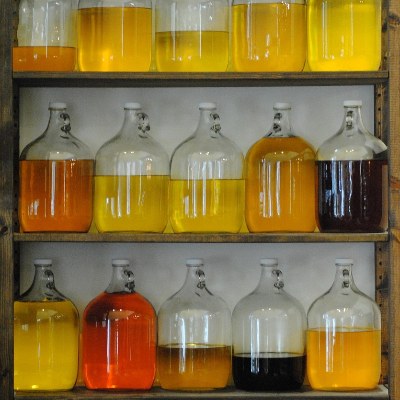Menu
-
-
F.A.Q
- How to identify genuine agarwood chip, natural or cultivated
- How to identify oil injection / absorption fake agarwood beads
- How to know if there are more than one oil in your oil
- How to make your wood bracelet or mala darker
- How to tell if an Agarwood bead sinks WITHOUT sinking it under water?
- How does back flow incense work and how do you burn it?
- Where to start if you don't know what agarwood is ?
- Why are you losing money if you buy seeds and plants?
- Which agarwood incense should I choose?
- Frequently Asked Questions
- Agarwood Related Articles
- Shipping
-
SHOP - Agarwood
-
SHOP - Other Fragrant Wood
-
SHOP - Incense Holder and Burner
-
- FREE Oud Oil guide
- Testimonials
- "Why did you buy this?"
- Contact us
- About Us
- +61430284329
- Login
-
English


Incense burning frequently asked questions
July 24, 2022 12 min read
Table of Contents:[hide]
Is burning incense good for you?
There is no definitive answer to this question as opinions vary greatly. Some people believe that burning incense can benefit one's health, while others think it may be harmful. Incense smoke does contain some toxins, so it is possible that long-term exposure could potentially be harmful. However, no concrete evidence suggests that burning incense is definitively bad for your health. Ultimately, it is up to each individual to decide whether they think burning incense is beneficial or not.
Here is an analogy
Car accidents happen every day everywhere, yet people are still driving. The key is to learn how to do it safely.
Is incense good for health?
In Japanese incense culture, the 10th virtue of Koh 香の十徳 is
常用無障 - Even if used daily, incense burning does no harm
There are benefits to incensing as a healthful practice for our spirit and person in various ways.
In "The Incense Bible" Kerry Hughes, she mentioned many of the allergic reactions or irritations caused by incense are due to burning incense with synthetic oils. According to an article published in the peer-reviewed journal Contact Dermatitis, a Japanese man in his sixties was seen at a clinic with an itchy skin condition on his body. Clearly, he had practised the Japanese incense ritual (Koh-do) for fifteen years without any adverse health issues. However, when they performed patch testing on the patients, it was discovered that the perfume oil used in the incense was to blame for their rash. The doctors in the clinic assumed that the incense's perfume oil must have been spread when it was burnt, and that the dermatitis was caused by the volatilized particles in the compounds contacting with his skin. (Hayakawa et al.,1987).
Incense was a useful tool (for example, timekeeping, each stick burns for 30 minutes), a weapon and medicine at the same time, used to drive away noxious odours and their ailments as well as evil spirits from pre-Columbian Mesoamerica to medieval Europe to the Himalayas (Mishan 2021)
According to a Sanskrit text that may have been composed as early as the first century B.C, the Dharma, or universal law, may be taught without sound or language through aroma. Because its nebulousness required transcendent attention, it could be transmitted via scent.
"the Tathagata does not teach the Dharma by means of sound and language. He disciplines the Bodhisattvas only by means of perfumes. At the foot of each perfume tree sits a Bodhisattva and the trees emit perfumes like this one. From the moment they smell that perfume, the Bodhisattvas attain the concentration called "Source of all Bodhisattva virtues". From the moment they attain that concentration, all the Bodhisattva virtues are produced in them." (Sangharakshita)
People pray with incense. It is a symbol of respect and a kind of offering. Surely people can pray without incense, but the feeling is not the same. The ambience is not the same without the incense smoke.
What does the Bible say about incense?
In the Bible, we read about two different types of incense. One was used for worshipping God, and the other was used for medicinal purposes.
The first type of incense was made from a recipe given by God to Moses. It consisted of four ingredients: stacte, onycha, galbanum, and frankincense. This incense was to be used to worship God in the Holy Place. It was not to be used for any other purpose.
The second type of incense was made from a different recipe. It consisted of six ingredients: myrrh, cassia, cinnamon, calamus, and olive oil. This incense was to be used for medicinal purposes.
The Bible tells us that both types of incense were holy. They were to be used for their intended purpose and not for any other purpose.
We also read in the Bible that incense was a part of the worship service in the Old Testament tabernacle and temple. The incense was burned on the altar of incense in the Holy Place. The smoke from the incense rose and symbolized the prayers of the people being offered to God.
The Bible tells us that we are to offer our prayers and praises to God with a pure heart. Incense can be a reminder to us of the importance of having a pure heart when we worship God.
"But you must not burn incense on the altar of the LORD your God that I am giving you. And you must not offer any strange incense on it, or burnt offering, grain offering, or moist offering; and you must not pour out a drink offering on it. You may, however, offer on the altar of the LORD your God burnt offerings and other sacrifices, as I have commanded you; and you may freely offer grain and drink offerings, as well. You must not neglect the Levitical priests because they are consecrated to minister to the LORD your God. Give them whatever is due them from your harvest and from your winepresses, for that is their share. They must share with you the burnt offering, the grain offering, and the drink offering which you offer to the LORD your God. And do not neglect to give them their due of leather, wool, and olive oil from your flocks and herds for their service in the tabernacle. see that they are given whatever is due them.” (Deuteronomy 18:4-8)
The incense smoke represents the prayers of the saints rising to God. (Revelation 5:8)
The altar of incense in the Old Testament tabernacle and temple was a type of intercession of Christ. (Hebrews 9:4)
So we see from the Bible that incense has been used since Old Testament times for worship and for medicinal purposes. The use of incense is not wrong in itself. It is only wrong if it is used for other purposes, such as magic or superstition.
The Catholic Church uses incense in its worship services. The priest blesses the incense and then puts some of it on the coals in the thurible (incense burner). The smoke from the incense rises and symbolizes the prayers of the people being offered to God.
The use of incense is not just a Catholic practice. Many other Christian churches also use incense in their worship services.
So how do we burn incense safely?
The basics of an incense
We will start with the basics. Incense is made of two things:
- spices
- bindings
Some manufacturers use fragrances to make incense aromatic. The bindings are used as the base or adhesiveness to make an incense stick.
It is then mixed with spices to create the desired scent. Some of the most popular species include frankincense, myrrh, sandalwood, agarwood cinnamon, cloves, and lavender.
However, as spices could be costly to transport and most of them have a definite shelf-life, some manufacturers "spice" their incense using fragrance oils. Some contain essential oils, others synthetic oils or both.
So fragrance oil can be the last ingredient. It is added to the binding to give the incense a pleasing smell.
Some people think synthetic fragrances are bad for health.
When you burn incense, three things that you might want to consider because they impact your well-being:
- The smoke
- The surrounding area
- The incense holder
The smoke
When we light incense, it will burn and release fragrant smoke. The smoke contains aromatic molecules which are pleasant to smell. However, the smoke can be toxic, especially when the incense is burnt in a closed environment.
The surrounding area
Incense should be lit in a well-ventilated area with a constant fresh air flow. Otherwise, carbon monoxide will accumulate, which is harmful to our health. When burning incense, the tip of the incense is on fire until the incense is fully combusted. There should not have any flammable substance around just in case an accident might happen.
For example, is there a curtain above or close to the burning incense? The curtain may contact the fire from the incense.
No matter what type of incense you are burning (sticks, coils, cones, powders, resins inclusive), you will need to secure them when burning them to prevent accidental fires. An incense holder will do this job.
The incense holder
The incense holder is one of the most essential tools you need when burning incense. It helps to protect your furniture and also, as mentioned earlier, it secures the incense while it burns. For example, when there was a breeze or a small sudden movement, the incense did not fall out.
The incense holders should be made with heat-resistant materials such as alloy, copper, or brass.
If you burn powder incense or resin, you will use an incense burner instead. The material to make incense burners are fire resistant such as stone, alloy or clay. Reason: these burners need to be able to hold burning charcoal which temperature could be over 300 degrees Celcius.
It means the burner will be very hot to handle by hand. You need to place the incense burner on a heat-resistant surface such as an incense matt. The high temperature could damage your furniture.
How to burn incense powder or resin
Incense burning may be a quick or extended ritual, depending on your needs and interests. Plan ahead of time, so you have time to enjoy the experience.
Get an incense container (also known as an incense burner or a censer), incense, lighter, charcoal, and a piece of cardboard for fanning off the burning flame.
First, get some ashes (you can also use sand or salt) to fill about half of your incense container. You can use a shallow dish made of metal, clay or porcelain as an incense container. The ash filling reduces the charcoal heat at the bottom of your incense container.
Second, use a tweezer to hold the charcoal, then light one end of the charcoal with a lighter.
That end of the charcoal will start to crackle and glow because it contains the igniting agent: sodium nitrate. Next, place the charcoal in the incense container on the ash with a pair of tweezers.
Third, wait around 2 minutes. You should see a small layer of ash formed around the charcoal.
Gently use a pair of tweezers to place the incense material (usually plant-based ingredients such as sandalwood, agarwood, and frankincense ) on top of the charcoal. Usually, tree resin will burn longer than powder incense. You will notice there will be more smoke when burning resin too.
Only use a small amount of the aromatic material, as too much of it may extinguish the fire.
The heat will make aromatic smoke rise. You can enjoy the aroma. In the meantime, you can perform your ritual or religious practices.
The burning time of charcoal can last up to two hours.
Below is a Japanese style of burning pressed incense, fragrant wood, tree resin and incense powder.

Source: Fischer-Rizzi S Ebenhoch P (1998) The Complete Incense Book, New York, Sterling Publishing Co Inc
Do not leave burning incense unattended. If you have to leave early, it is recommended to emerge the burning charcoal under water until it is completely extinguished.
How to burn incense stick (and coil incense)?
First, find a well-ventilated place to burn your incense sticks. It is best to burn them in an incense holder on a heat-resistant surface.
Second, light the end of your incense stick with the lighter, then fan out (or gently blow off) the flame so that the end of the stick is only smouldering. The lit incense will start producing smoke.
Third, place the incense stick in the incense holder

Incense holder to hold incense stick and coil
In a well-ventilated area, the incense will burn properly. The burning time of an incense stick can be around 30 minutes to one hour.
Never leave burning incense unattended.
However, there is one exception.
When you go to a Buddhist or Hindi temple, you may want to offer incense sticks to Buddha or Hindi Deities. The incenses you use are known as joss sticks.
In religious practices, joss sticks are often placed securely in a caldron in the temple. You can leave these joss sticks unattended because these burning incense used in offerings are monitored by temple staff.
Why you shouldn't burn incense?
There are a few reasons why you might not want to burn incense. The first reason is that it can be bad for your health. Incense smoke can contain harmful chemicals that can be breathed in, leading to health problems. Additionally, burning incense can produce a lot of smoke, and this smoke can be difficult to clear out of a room. If you are burning incense in an enclosed space, it is important to ensure that the area is well-ventilated so that the smoke does not become trapped and cause problems.
Another reason why you might not want to burn incense is that it can be a fire hazard. Incense sticks are made of highly flammable materials, and if they are not used properly, they can easily catch fire and cause damage. Additionally, incense smoke can irritate the eyes and throat, so it is important to be careful when using it.
Incense burning can be dangerous.
For example, hemlock, an incense ingredient that was used in the past, is a poisonous plant. It has the potential to produce extremely vivid hallucinations, as well as potentially fatal side effects. When burned, these herbs give off a toxic vapour.
Is incense a spiritual thing?
Incense is typically considered spiritual. It is often used in religious ceremonies and can be used as a way to connect with the divine. Additionally, incense can be used for its metaphysical properties. For example, some people believe that burning certain types of incense can help to cleanse a space of negative energy.
Why does some incense have bamboo core and some does not?
The type of core that an incense stick has is generally determined by the ingredients used in the stick. Bamboo cores are commonly used in incense sticks made for religious purposes. This is because bamboo is a more porous material than other types of wood, which allows the scented smoke to disperse more evenly. Bamboo cores are also used in incense sticks that are meant to be burned for a shorter period of time, as they tend to extinguish more quickly than other types of cores. Finally, bamboo cores are often used in cheaper incense sticks, as they are less expensive to produce than other types of cores.
Some incense sticks do not use bamboo core because there is no need. Bamboo is not an aromatic material. Having it as a core may produce some burnt notes. Usually, some high-end incense does not have a wooden core.
Are incense sticks or cones better?
There is no definitive answer as to whether incense sticks or cones are better. It really depends on personal preference. Some people prefer the smell of incense sticks, while others find that cones provide a more intense scent. Ultimately, it is up to the user to decide which type of incense they prefer.
Usually, people burn cone incense for visual effect: the backflow also known as downflow.
Making incense cones to produce smoke flowing backwards is a simple trick. As long as there is a hole at the bottom of the cone. There will be more smoke at the bottom of the cone after the cone is burned more than half.
What are synthetic ingredients used to make incense?
There are a variety of synthetic ingredients that can be used to make incense, including synthetic oils, resins, gums, and balsams. These ingredients are often used to create a more potent scent or mimic natural ingredients' smell. Synthetic ingredients may also add colour or texture to incense sticks.
Unfortunately, I do not know the exact formula. What I do know is some manufacturers use unscented incense sticks to dip into these fragrance oils. They called it hand-dipped incense.

Unscented incense stick without bamboo core
Source: supplier's email
Can you use incense to meditate?
Yes, incense can be used in meditation. Incense can be used as a tool to help you focus and connect with your inner self. The fragrant smoke of the incense will help relax and calm your mind, making it easier for you to enter a meditative state. Additionally, the act of burning incense can be soothing.
Can incense cause air pollution?
Incense can cause air pollution, especially when it is burned indoors. The smoke from incense sticks contains various harmful chemicals, including carbon monoxide, formaldehyde, and benzene. These chemicals can be damaging to your health if inhaled. Additionally, the smoke from incense can irritate the eyes and throat. Therefore, it is essential to burn incense in a well-ventilated area and never leave the burning smell unattended.
How should I store my incense?
Incense should be stored in a cool, dry place. Incense sticks made with essential oils should be placed in an airtight container to prevent them from drying out.
Additionally, it is important to keep incense away from children and pets.
Leave a comment
Comments will be approved before showing up.
Also in News

What is Tasbih? The Deep Meaning of Subhan Allah and the Role of Prayer Beads
November 09, 2025 4 min read

